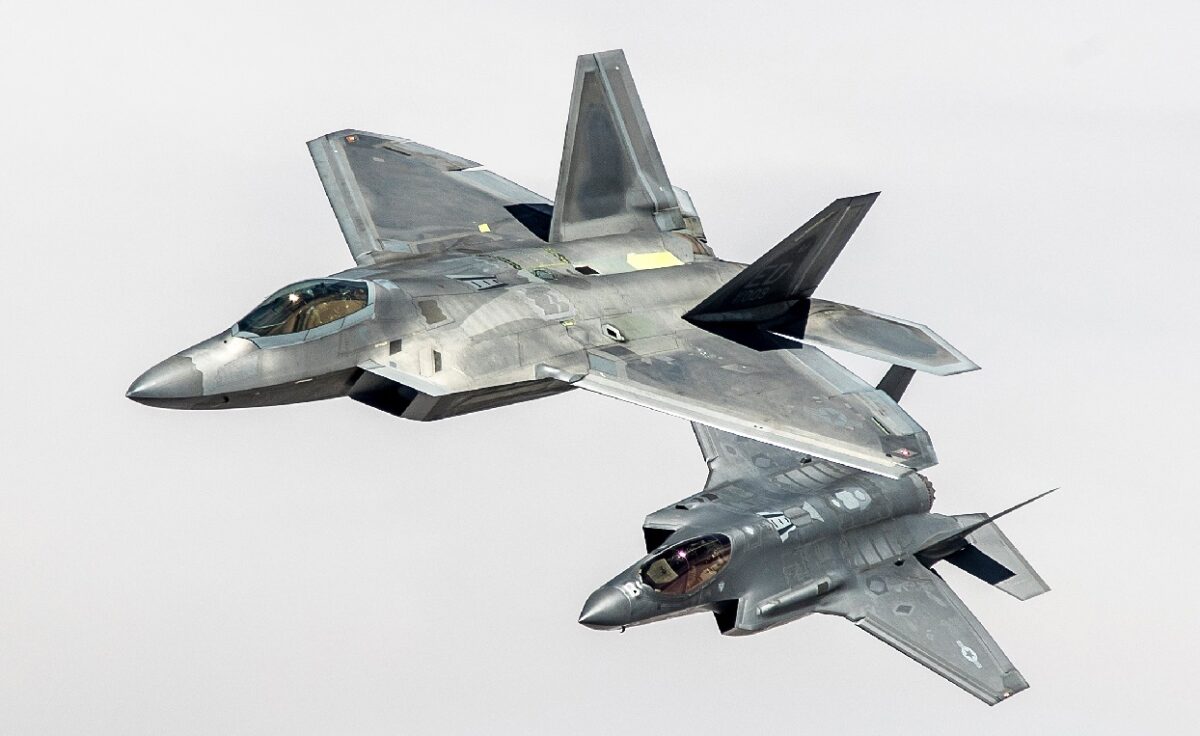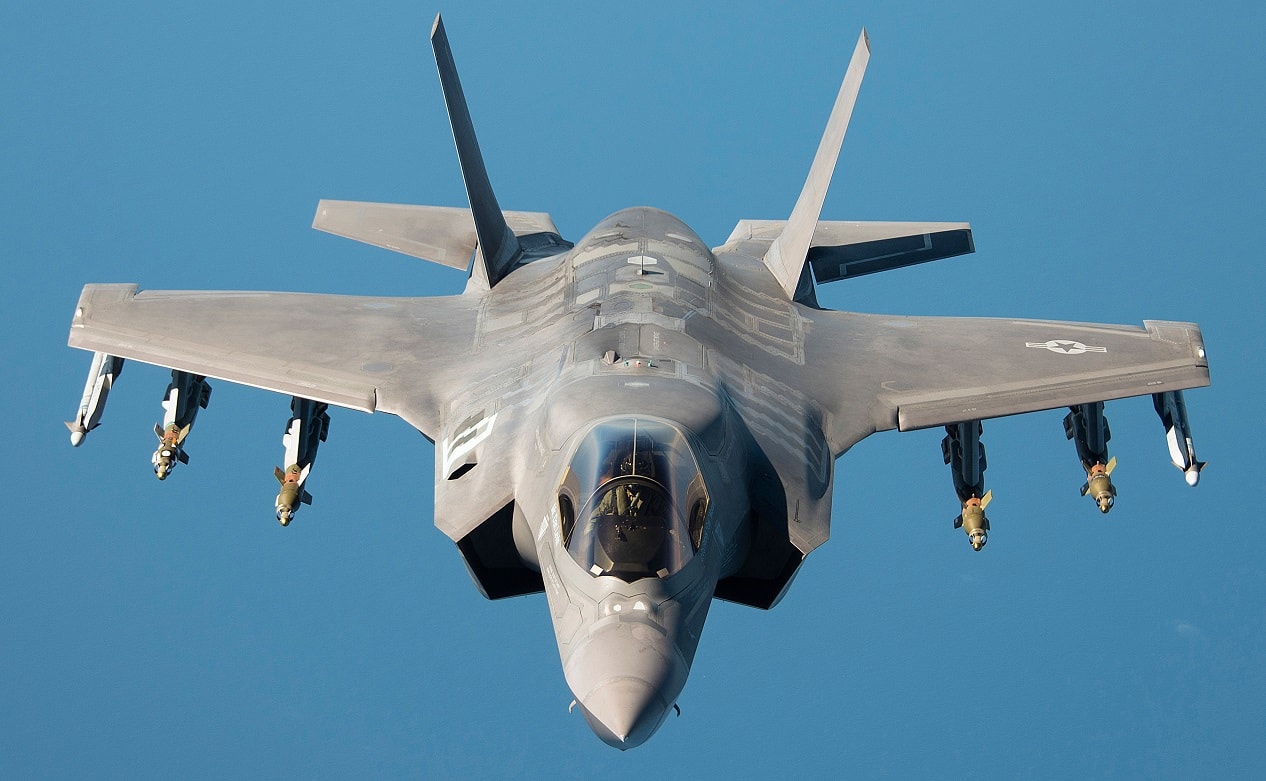The U.S. military is all in on trying to make sure it is ready for a great power war with China if it ever came – and let us hope it never does. That means Washington needs its best assets, like the F-22 and F-35, as close to the potential ‘battlefields’ of that conflict as possible: In preparation for a conflict in the Indo-Pacific, the U.S. military is considering repositioning the F-35 Joint Strike Fighter and F-22 Raptor stealth fighter jets closer to China.
In a recent chat at the Foundation for the Defense of Democracies, Admiral John C. Aquilino, the commander of the U.S. Indo-Pacific Command (INDOPACOM) expressed his desire to see fifth-generation fighter jets stationed closer to China.
F-35s and F-22s close to China
The commander of the most important combatant command said that the constant presence of F-35 and F-22 in the area of operations is crucial in “deliver[ring] deterrence” and that a “forward stationed, persistent, deep-penetrating capability” is what he wants to counter current or future Chinese aggression in the region.
Aquilino also said that he wants that fifth-generation capability to be expeditionary. And in many ways, it already has. F-22 Raptors and F-35 Lightning IIs have been deploying to the Indo-Pacific quite regularly in Agile Combat Employment (ACE) drills.
To be sure, there are permanently-stationed fifth-generation fighter jets in the region but they belong to allied nations. Australia, South Korea, and Japan can field almost 100 F-35 Joint Strike Fighter stealth jets. Any U.S. stealth fighter jets in the area of operations are stationed there on a temporary basis while training with local units and conducting area familiarization.
Guam is a perfect location to permanently station fifth-generation stealth fighter jets closer to China.
“We will need to operate from Guam. We will need to both fight for and from Guam, and it will provide a variety of capabilities and support functions should we end up in some crisis situation. So that’s extremely important, and … 125,000 United States citizens, it’s the homeland, who would expect to be defended and we treat it, obviously, as important as it is,” Aquilino said.
But to do so, INDOPACOM has to take into account the potent long-range fires capabilities of the Chinese military, including ballistic and cruise missiles and hypersonic weapons. The Chinese military has been working on developing weapon systems that could strike U.S. military bases all around the Indo-Pacific, in addition to creating a potent anti-access/area denial (A2/AD) umbrella in and around the South China Sea that aims to keep away American warships and aircraft.
“The PLA rocket forces are clearly developing continuous advanced capabilities —longer range. Guam has a 360-degree threat, so our ability to defend it and to be able to operate from there is absolutely critical… I can see a continuous improvement and a continuous threat [from the Chinese military], and what that leads me to do is to move with a sense of urgency in order to provide the capabilities that both defend and we can project power from Guam,” the INDOPACOM commander said.
In total, the Indo-Pacific area of operations is probably the region with the most stealth fighter jets in the world. China can field approximately 150 Chengdu J-20 Mighty Dragon stealth fighter jets, while Australia operates 44 F-35A Lightning IIs, South Korea 32 F-35As, and Japan 23 F-35As. (You can read a thorough breakdown of the stealth fighter jet fleets of the world here.)
The F-35 Lightning II and F-22 Raptor
Both the F-22 and F-35 are fifth-generation stealth fighter jets.
The F-22 is an air-superiority fighter jet designed to rule the skies and clear them from any enemy aircraft.
An extremely maneuverable aircraft because of its two-dimensional thrust vectoring capabilities and high thrust-to-weight ratio, the F-22 Raptor is the first stealth fighter jet to ever take to the skies in force. Using its thrust vectoring technology, the F-22 Raptor can literally be flying in one direction but point the thrust of its engines elsewhere, allowing for a rapid change of direction, a crucial trait to have in dogfighting.
The F-35, on the other hand, is a multi-role fighter jet with a broader mandate.
The F-35 specializes in six mission sets: Air Superiority, Strategic Attack, Close Air Support, Electronic Warfare, Intelligence, Surveillance, and Reconnaissance (ISR), Suppression Enemy Air Defenses (SEAD), and Destruction of Enemy Air Defense (DEAD).

IFG Family Photo, F-22, A/C 4009, LtCol Lee “Split” Bryant, F-35A, AF-3, Major Jonathan “Spades” Gilbert, F-16D, A/C 835, Major Charles Brantigan & Major Scott “Gins” Rinella, in formation over ISB, Tanker View, 15 May 2019
Where the F-35 mostly differs from the F-22 is in its sensory and connectivity capabilities. To be sure, both aircraft have superb situational awareness, but the F-35 takes the capability a step further by utilizing its sensors, information fusion, and data link capabilities to create an unparalleled picture of the battlefield and share it with friendly assets (aircraft, ground troops, or warships) to make the joint force more lethal and effective. In a sense, the F-35 is the quarterback of the skies, enabling others’ touchdowns.
The two aircraft differentiate in another way too. Whereas the F-22 comes only in one version (F-22A), the F-35 has three different iterations: the F-35A is the conventional take-off landing version; the F-35B is the short take-off and vertical landing (STOVL) iteration; and the F-35C, is the aircraft carrier iteration of the aircraft. The three versions of the F-35 are the same aircraft, with their main difference being how they get to the fight.
Stavros Atlamazoglou is a seasoned defense journalist specializing in special operations, a Hellenic Army veteran (national service with the 575th Marine Battalion and Army HQ), and a Johns Hopkins University graduate. His work has been featured in Business Insider, Sandboxx, and SOFREP. This first appeared in Sandboxx.

